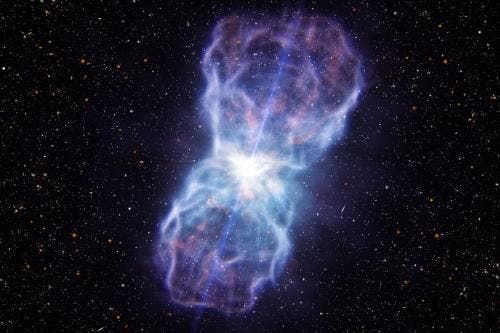Astronomers using ESO‘s Very Large Telescope (VLT) have discovered the most powerful quasar outflow discovered to date – five times more energetic than the previous record holder.
Dubbed SDSS J1106+1939, the quasar outflow is at least equivalent to two million million times the power output of the Sun or 100 times higher than the total power output of the Milky Way galaxy. The newly discovered outflow lies about a thousand light-years away from the supermassive black hole at the heart of the quasar. This is a beast, make no mistake!

Quasars are the most energetic cosmic objects in the Universe, and are powerful by black holes at the center of galaxies. Gravitational stresses and intense friction outside of the event horizon of black holes causes accretion of material around them, which in term power quasars that shovels massive amounts of escaping energy into cosmos.
According to Hubble’s law the redshift shows that quasars are very distant and, because of their distance, much older than our universe.
“I’ve been looking for something like this for a decade,” says team leader Nahum Arav from Virginia Tech, “so it’s thrilling to finally find one of the monster outflows that have been predicted!”
It is believed quasars and their outflows play a vital role in the formation of galaxies. Quasars may influence how the mass of a galaxy is linked to its central black hole mass, and why there are so few large galaxies in the Universe. Still, these issues and many more, are yet to be resolved. Our understanding of quasars has come a long way in the past few decades, and it is through milestone discoveries such as that of J1106+1939 that we will further expand our knowledge.
Findings were detailed in the The Astrophysical Journal.


